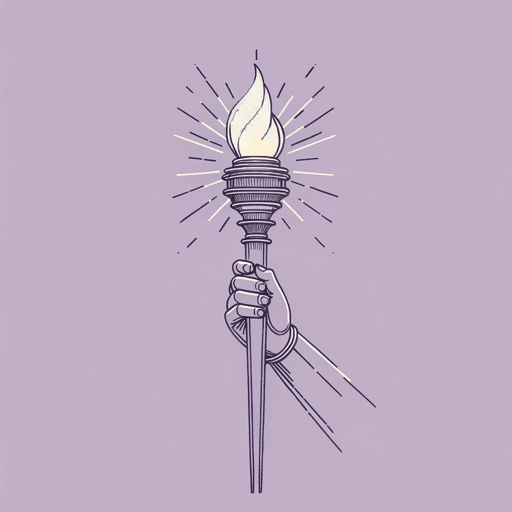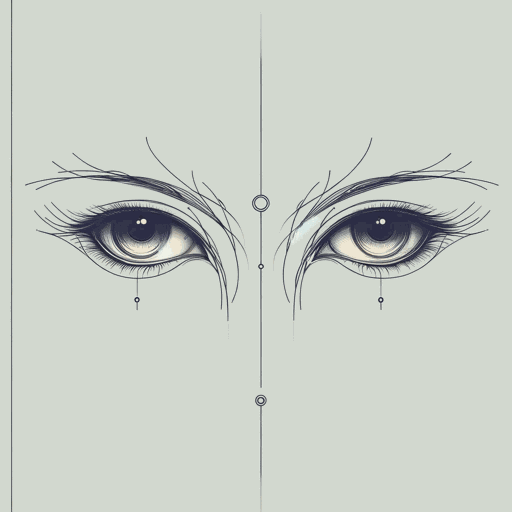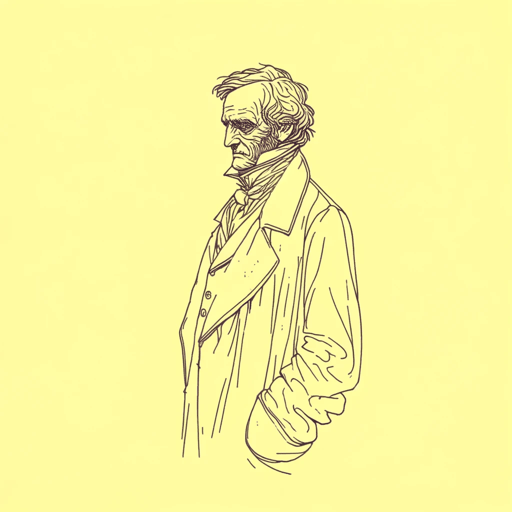37 pages • 1 hour read
Edgar Allan PoeThe Tell-Tale Heart
Fiction | Short Story | Adult | Published in 1843A modern alternative to SparkNotes and CliffsNotes, SuperSummary offers high-quality Study Guides with detailed chapter summaries and analysis of major themes, characters, and more. For select classroom titles, we also provide Teaching Guides with discussion and quiz questions to prompt student engagement.
Summary and Study Guide
Summary: “The Tell-Tale Heart”
“The Tell-Tale Heart” is one of Edgar Allan Poe’s best-known short stories, first published in The Pioneer in January 1843. The work is written in the Gothic horror style from the second-person point of view. It has been adapted multiple times for various media, starting with a 1928 movie of the same name.
Originally, the story included an epigraph with a stanza from Henry Wadsworth Longfellow’s 1838 poem “A Psalm of Life,” subtitled “What the Heart of the Young Man Said to the Psalmist”:
Art is long, and Time is fleeting,
And our hearts, though stout and brave,
Still, like muffled drums, are beating
Funeral marches to the grave.
The epigraph was removed from later editions due to Poe’s repeated accusations of plagiarism against Longfellow.
The unnamed narrator begins by addressing an unknown interlocutor directly, confessing to the murder of an old man in whose house the narrator used to live. The narrator’s age and gender, and their relationship to the victim, are unclear. The confession is meant to convince the unknown interlocutor of the criminal’s sanity, but it has the opposite effect. The narrator confesses to feeling compelled to commit murder by the old man’s single “pale blue eye,” the eye of a “vulture” with a white film over it (Paragraph 2). The murderer calls it an “Evil Eye” and is obsessed with getting rid of it (Paragraph 4), despite claiming they loved the old man, who never mistreated them.
Before committing the murder, seven nights in a row, at midnight, the narrator cautiously and slowly opens the door to the man’s bedroom and shines a single ray of light on his sleeping eye, which remains closed each night. Since the narrator hates the eye, not the man, they keep postponing the terrible deed.
On the eighth night, the narrator’s actions wake the old man up. The murderer does not withdraw, as it is completely dark in the room and they remain invisible. The old man asks who is there, but the narrator remains silent, enjoying a sense of power over the other man. The two men remain in a stalemate for an hour, the narrator waiting and reveling in their knowledge, the old man trying but failing to calm himself. Upon hearing a sound like a groan of fear, the narrator imagines with relish how the old man experiences his fear.
Finally, the murderer opens the lantern so a very small ray of light illuminates the open evil eye. The narrator believes that at this moment the old man’s heartbeat becomes audible, like the ticking of a watch “enveloped in cotton” (Paragraph 11). The murderer continues waiting, shining the light onto the eye, while the heartbeat grows progressively louder. Afraid that the neighbors might hear the noise, the narrator suddenly opens the lantern all the way and jumps into the room. The old man shouts in terror. The criminal drags him to the floor and covers him with the bed. The heart keeps beating erratically for a while, but eventually stops, and the narrator uncovers the body. The old man is “stone dead,” and his eye will no longer trouble the murderer (Paragraph 12).
The narrator recounts dismembering the body, cutting off the head and extremities first. They hide the body parts under the floor planks. There is no evidence left, since all the blood has been caught in the tub. At that moment, there is a knock on the door.
Three policemen have come to inquire about a shout a neighbor heard during the night. The narrator is calm, as there is nothing to fear. They invite the policemen to come in and search the premises, including the old man’s bedroom. The narrator even brings in chairs and bids the men to sit and rest. The murderer places their own chair on top of the planks hiding the body parts. Seemingly satisfied that everything is in order, the officers begin chatting. The narrator suddenly starts feeling unwell, suffering a headache and ringing ears. The murderer starts talking, trying to get rid of the unpleasant sensation, but the ringing continues. Eventually the narrator realizes it sounds like the ticking of a watch covered in cotton.
The narrator tries to mask the noise by talking loudly and rapidly, getting up and gesticulating. They pace, while raving, going as far as taking the chair and grating it over the floorboards. The policemen continue smiling and talking. The narrator believes that they, too, hear the noise and know about the crime, and are simply feigning ignorance. This leads to the murderer losing their cool and confessing, telling the policemen to tear up the planks where the old man’s heart is still beating.
Related Titles
By Edgar Allan Poe

A Dream Within a Dream
Edgar Allan Poe

Annabel Lee
Edgar Allan Poe

Berenice
Edgar Allan Poe

Hop-Frog
Edgar Allan Poe

Ligeia
Edgar Allan Poe

Tamerlane
Edgar Allan Poe

The Black Cat
Edgar Allan Poe

The Cask of Amontillado
Edgar Allan Poe

The Conqueror Worm
Edgar Allan Poe

The Facts in the Case of M. Valdemar
Edgar Allan Poe

The Fall of the House of Usher
Edgar Allan Poe

The Gold Bug
Edgar Allan Poe

The Haunted Palace
Edgar Allan Poe

The Imp of the Perverse
Edgar Allan Poe

The Lake
Edgar Allan Poe

The Man of the Crowd
Edgar Allan Poe

The Masque of the Red Death
Edgar Allan Poe

The Murders in the Rue Morgue
Edgar Allan Poe

The Narrative of Arthur Gordon Pym of Nantucket
Edgar Allan Poe

The Oval Portrait
Edgar Allan Poe

